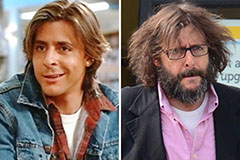Discover the Necessary Overview to Art Book Printing for Aspiring Artists and Publishers
As a hopeful musician or publisher, recognizing the subtleties of art book printing is important to bringing your vision to life. What are the vital aspects you should concentrate on to create a magnificent art book that really represents your job?
Understanding Different Kinds Of Art Books
When you dive into the globe of art publications, you'll quickly uncover that they come in various types, each tailored to different artistic expressions and target markets. Coffee table books often showcase magnificent visuals, best for laid-back surfing, while essays dive deep right into an individual artist's job, providing context and understandings. If you want specific art activities, exhibit catalogs supply comprehensive documentation of shows, featuring essays and reviews.
For training objectives, art guidebooks and strategy publications guide you with various tools and designs, making them necessary for aspiring artists. Each format serves its purpose, and understanding their distinctions can boost your art book journey.
Selecting the Right Paper and Materials
Picking the best paper and materials can significantly influence the total quality and feeling of your art book. Begin by considering the type of art work you have. For lively colors and detailed details, go with a shiny coating or a heavyweight matte paper that improves visual deepness. If your job features softer tones or structures, an all-natural or uncoated paper can give a cozy, welcoming touch.
Think concerning the weight of the paper, also. Thicker choices often provide a more specialist appearance, while lighter documents can reduce printing prices. Do not fail to remember about the binding materials; a durable cover can protect your web pages and include in the book's visual.
Ultimately, consider sustainability. Environmentally friendly options are getting appeal and can mirror your values as an artist. By thoroughly choosing your paper and materials, you'll ensure that your art book not only looks great however additionally really feels unique in the hands of your readers.

Choosing the Best Printing Strategies
When it concerns printing your art book, selecting between offset and electronic printing can substantially affect your last product. You'll likewise intend to think about just how paper high quality impacts the total feel and look of your artwork. Let's check out these crucial printing methods to discover the very best suitable for your project.
Balanced Out vs. Digital Printing
While both balanced out and digital printing have their advantages, choosing the best strategy for your art book can significantly impact the last item. Balanced out printing uses high-quality images and lively shades, making it perfect for bigger print runs. Inevitably, your selection must straighten with your artistic vision and distribution strategy, guaranteeing that your art book shows the quality you desire.
Paper High Quality Considerations
Choosing the right paper quality can considerably improve the visual appeal and responsive experience of your art book. For prints, a glossy coating can make pictures pop, while a matte coating supplies a softer, much more refined look.
Next, think of the sustainability of your selection. Eco-friendly options are coming to be significantly popular and can attract environmentally-conscious viewers. Lastly, demand examples to see just how different documents collaborate with your artwork, making certain the end product reflects your vision flawlessly.
Making Sure Color Accuracy in Your Prints
To attain spectacular prints, you require to concentrate on shade accuracy from the beginning. You'll want to use color calibration methods to confirm your display and printer are in sync. In addition, proofing your job prior to the final print run can assist catch any disparities, ensuring your art looks simply as you visualized.
Color Calibration Strategies
Assuring color accuracy in your prints begins with effective shade calibration methods that assist preserve consistency between your electronic images and final published items. Calibrate your screen using equipment calibration devices to accomplish the ideal color depiction. This confirms that what you see on-screen matches what obtains published. Next off, select a shade profile fit for your printing procedure, like CMYK for print products. Consistently check your printer's additional info setups and preserve it to prevent shade changes. It's likewise vital to use high-quality paper that complements your inks, as different surface areas can significantly impact color output. By constantly applying these methods, you'll enhance the overall quality of your art prints and much better communicate your artistic vision.
Proofing for Precision
While you may assume your electronic pictures are ready for print, proofing is important for achieving color precision. Before dedicating to a full print run, always ask for an evidence from your printer.
If changes are required, connect plainly with your printer concerning your desired end results. Do not be reluctant to demand several proofs if needed; it's worth the financial investment to get it. Eventually, thorough proofing guarantees that your artwork is stood for as you envisioned it, keeping your imaginative honesty throughout the printing process.

Designing Layouts That Enhance Your Art Work
When you create formats for your art book, it's necessary to contemplate how each element engages with your artwork. Objective for an equilibrium in between visuals and message, guaranteeing neither overshadows the various other. Use white space strategically; it gives your art work space to take a breath and draws focus to its information.
Consider the circulation of your book. Prepare images in such a way that guides the visitor's eye, creating a narrative or thematic progression. art book. Differ the dimensions and alignments of your art work to maintain the layout dynamic and fascinating
Select typefaces that match your artwork without distracting from it. Keep message succinct and relevant, supplying context or understanding that enhances the visitor's experience.
Ultimately, test various formats. Publish samples to see just how the designs translate on paper, and adjust as needed. By attentively designing your layouts, you'll produce an aesthetically interesting art book that reverberates with your target market.
Binding Choices for a Specialist Finish
Picking the right binding choice can significantly influence the total presentation of your art book. You'll wish to take into consideration both appearances and toughness when making your selection. Popular alternatives consist of excellent binding, which offers a smooth appearance and is perfect for thicker publications; saddle sewing, ideal for smaller pamphlets; and spiral binding, which allows web pages to lay flat for very easy viewing.
If you're going for a premium feel, case binding is an outstanding option, supplying a official source sturdy cover and a specialist appearance (art book). Don't neglect concerning the cover product; choices like fabric, natural leather, or a glossy finish can raise your book's appeal
Whatever alternative you choose, make certain it matches your art work and boosts the reader's experience. Take your time to evaluate the pros and disadvantages of each technique, so your final item reflects the top quality of your innovative vision.
Preparing Your Documents for Publish Readiness
To guarantee your art book is print-ready, you'll require to pay very close attention to submit preparation. Beginning by setting your record size to match your preferred print measurements. Usage high-resolution images-- 300 DPI is the criterion-- to determine sharp, vibrant visuals. Transform your data to CMYK mode, as this shade space is finest for printing. Do not fail to remember to consist of hemorrhage locations, typically an additional 0.125 inches around your web pages, to avoid any kind of white sides after cutting.
Likewise, embed your font styles or transform message to outlines to prevent any font style issues. Save your job in a PDF format, as this is one of the most accepted file type for printers. Double-check your data for any type of typos or design mistakes, as changes can be pricey after the truth. Finally, take into consideration developing a proof to examine prior to the final print run. Adhering to these actions will assist you attain a sleek, expert art book.
Often Asked Concerns
What Is the Average Price of Publishing an Art Book?
The average cost of printing an art book differs, however you can expect to pay anywhere from $5 to $20 per duplicate, depending upon variables like size, paper quality, and printing volume.
Just How Can I Discover a Reliable Printing Business?
To locate a reputable printing company, begin by looking into on the internet reviews and asking fellow musicians for suggestions. Contrast quotes, inspect portfolios, and interact your needs plainly to ensure they recognize your vision and high quality expectations.
What Is the Regular Turnaround Time for Printing?
The regular turnaround time for printing differs however typically ranges from one to 4 weeks. Variables like job intricacy and volume can impact this. Always validate with your chosen printer for specific timelines and assumptions.
Can I Publish My Art Book in Limited Quantities?
Yes, you can most definitely publish your art book in limited amounts. Lots of printing firms use short-run alternatives, allowing you to produce just click here for more info the number you need, making it simpler to take care of prices and inventory.
What Legal Considerations Should I Know for My Art Book?
You should take into consideration copyright, licensing contracts, and design launches when creating your art book. Ensure you can make use of all pictures and text, securing on your own from potential lawful issues later on.
 Mara Wilson Then & Now!
Mara Wilson Then & Now! Judd Nelson Then & Now!
Judd Nelson Then & Now! Michelle Pfeiffer Then & Now!
Michelle Pfeiffer Then & Now! Kelly Le Brock Then & Now!
Kelly Le Brock Then & Now! McKayla Maroney Then & Now!
McKayla Maroney Then & Now!